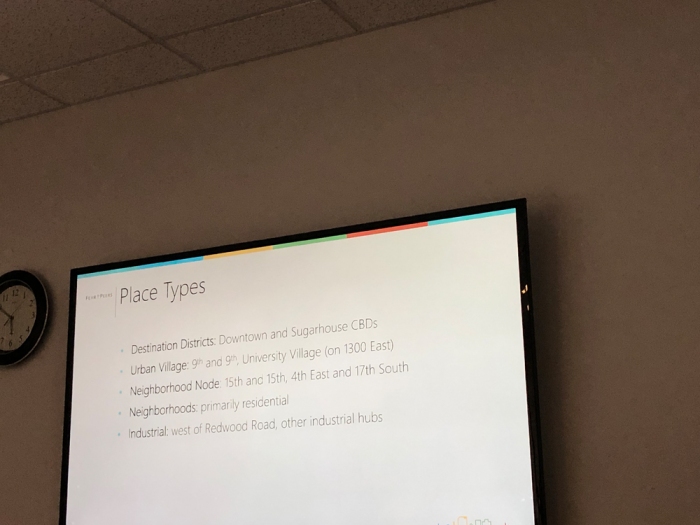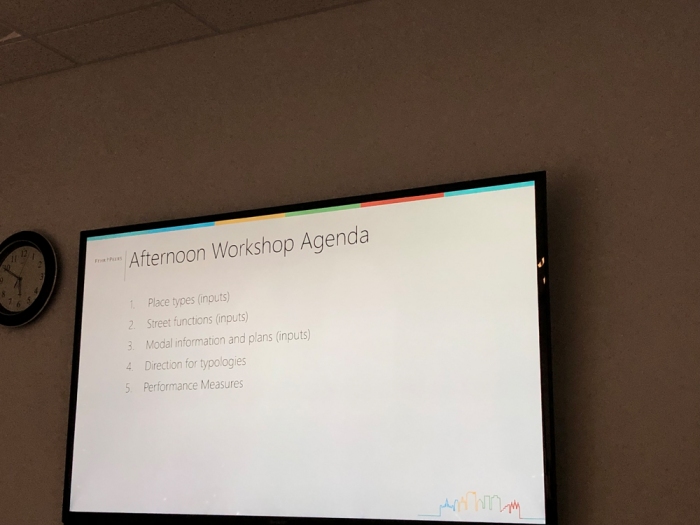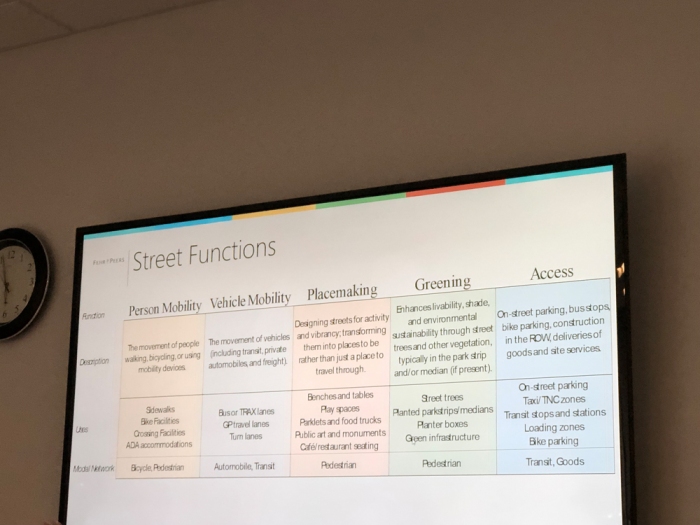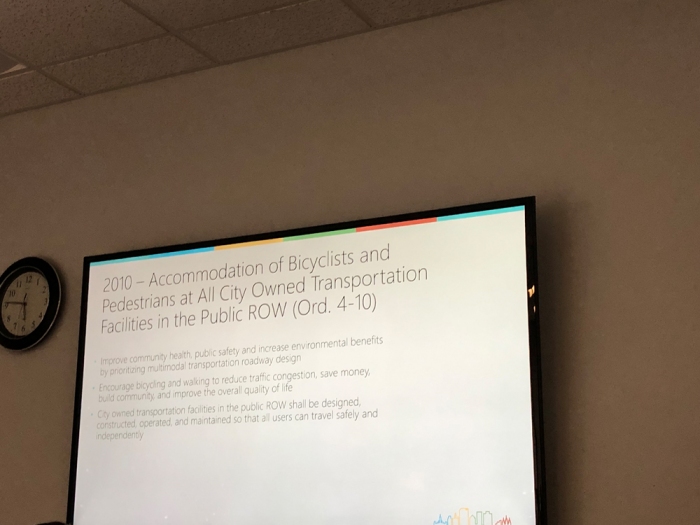Input is needed from the public to help guide the planning process. Please take the survey linked further down the article to comment.
September 17, 2019 – Salt Lake City is revisiting how it classifies streets in order to create better solutions for how a street will look after it is rebuilt. Currently, streets have the following classifications: freeways, arterials, collectors, local streets, and neighborhood byways (like a Bike Boulevard). The current system from Salt Lake City Transportation Master Plan of 2006 is limited, and doesn’t really specify what a street would look like after reconstruction. For more on the plans for the new guide, see: https://www.slc.gov/transportation/2019/08/30/typologies/
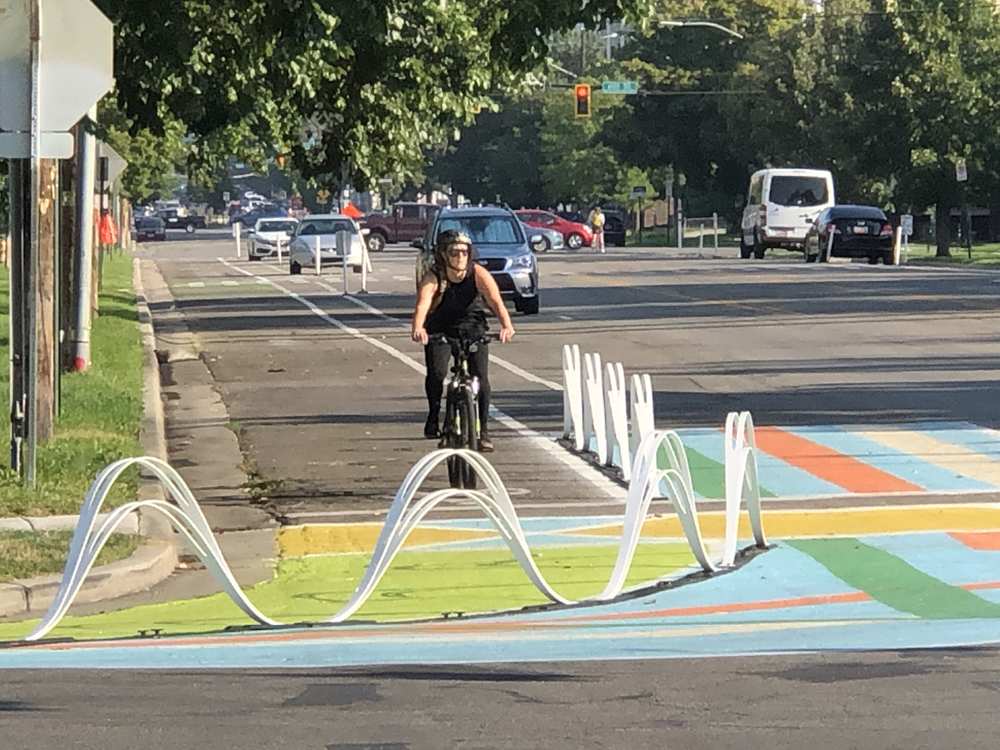
The guide will be loosely based off of Seattle’s street typologies plan which has 12 different typologies. Salt Lake City is working with 5 neighborhood types that will ultimately lead to the 15 new street typologies. These are: Destination Districts (like downtown or Sugarhouse), Urban Village (like 9th and 9th), Neighborhood Nodes (like 15th and 15th), Neighborhoods (residential), and Industrial (like the area west of Redwood Road).
The new system will have 15 different design solutions or typologies, complete with a cross section and desired outcome.
Take the Street Typologies Survey by early October, 2019.
At the Salt Lake City Bicycle Advisory Committee Meeting on September 16, 2019, Salt Lake City gave a presentation about the new plan. It’s estimated that the plan will be complete in 2020, and will be followed by a revisting of the Salt Lake City Complete Streets Ordinance.
Our Comments:
Overall the concept of the guide seems like a good one that will result in better streets once implemented. And, a better Complete Streets Ordinance.
Note that we haven’t seen any of the 15 draft typologies as these have not been shared publically yet. It seems like a lot, but may be necessary to classify Salt Lake City’s multitude of roadways.
Salt Lake City’s streets need a number of the following improvements: Narrower lane widths, traffic calming measures, slower speed limits, reduced car parking reduced lanes (more road diets), and bike lanes on pretty much every major street, and many neighborhood streets.
The whole way that Salt Lake City looks at streets in terms of design, safety, and accommodations needs to change. Currently, it’s an autocentric mess with ‘Complete Streets’ and all of the accompanying changes such as those suggested above are often afterthoughts in the design process or conveniently ignored.
Look at 900 W for example, and the decisions to a) not reduce the speed limit to 25 or 30 after the redesign, and b) to not extend the bike lanes to 2100 S. Both of these lead to less safe, less complete streets that are not for people, but are for cars and trucks.
This street typology exercise is interesting, and will hopefully have some good outcomes, but only if Salt Lake City is willing to do what is needed to create streets where people – people on foot, people in wheelchairs or other personal mobility devices, people on bikes, people on scooters, and people in buses or rail come before cars and trucks.
In regards to street design itself, each and every street repaving and restriping should add bike lanes on any major streets. More attention needs to be paid to pedestrian crossings and signals so that pedestrians come before cars. This is not the case.
The plan should reduce lane widths to slow down motorized traffic and reduce speed limits citywide to slow down motorized traffic.
We’d like to see more (any?) parklets in neighborhoods such as 9thand 9th, and downtown. Many other cities have had great success with these, but Salt Lake City only does these as demonstration projects.
The plan should look at the sidestreets in downtown SLC and figure out on which ones you can remove or reduce car traffic and create a higher level of comfort for pedestrians. Where could we have a pedestrian only street? Main Street? 300 South between State and Main? The heart of Sugarhouse?
And, in regards to this exercise in street typologies, please don’t use the many different potential typologies to keep bike lanes from being installed on industrial streets. Good bike lanes and good sidewalks are needed especially in those areas so that they foster a reduced dependence on cars.
Regarding the Complete Streets ordinance, and how this fits in with street typologies, a great start would be if Salt Lake City would actually follow their own ordinance instead of ignoring it like they have on 2100 S, 700 S, 100 S, and the street to the new Stadler Rail complex.
Additionally, we wonder if UDOT will be on board with whatever Salt Lake City comes up with. Often, UDOT owned roads do not follow along with Salt Lake City’s plans (see for example the recently repaved W. Temple section in downtown Salt Lake City that has 6 lanes of traffic, lower traffic volume, and no bike lanes).
Salt Lake City really needs to step up and change. The measures that we have been doing are not enough to have people first streets, which will lead to a more dynamic, healthy, and safe city. The Street Typologies guide is a step in the right direction.
Photos of the presentation are below:




